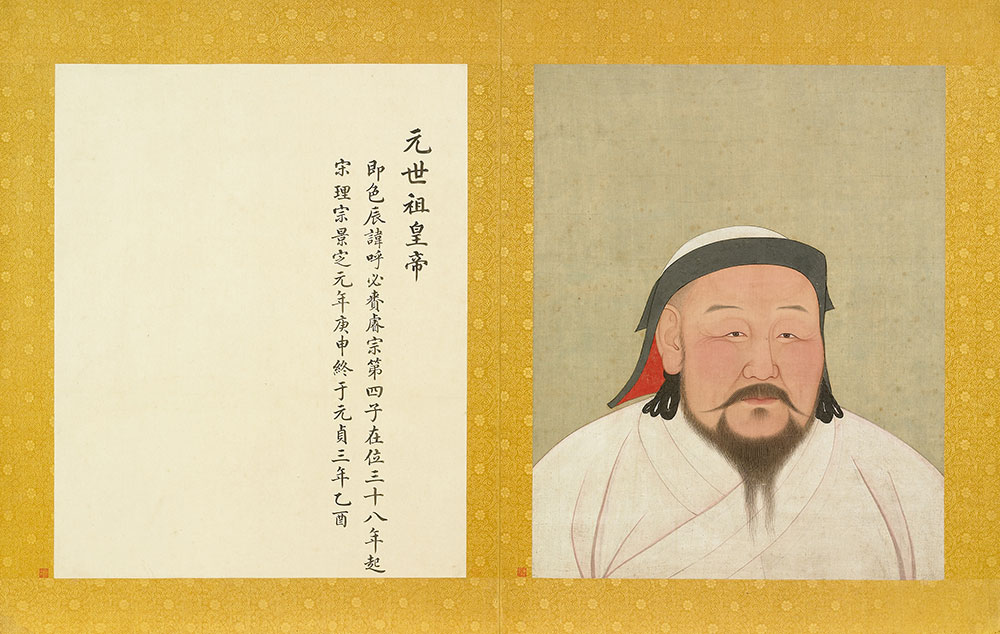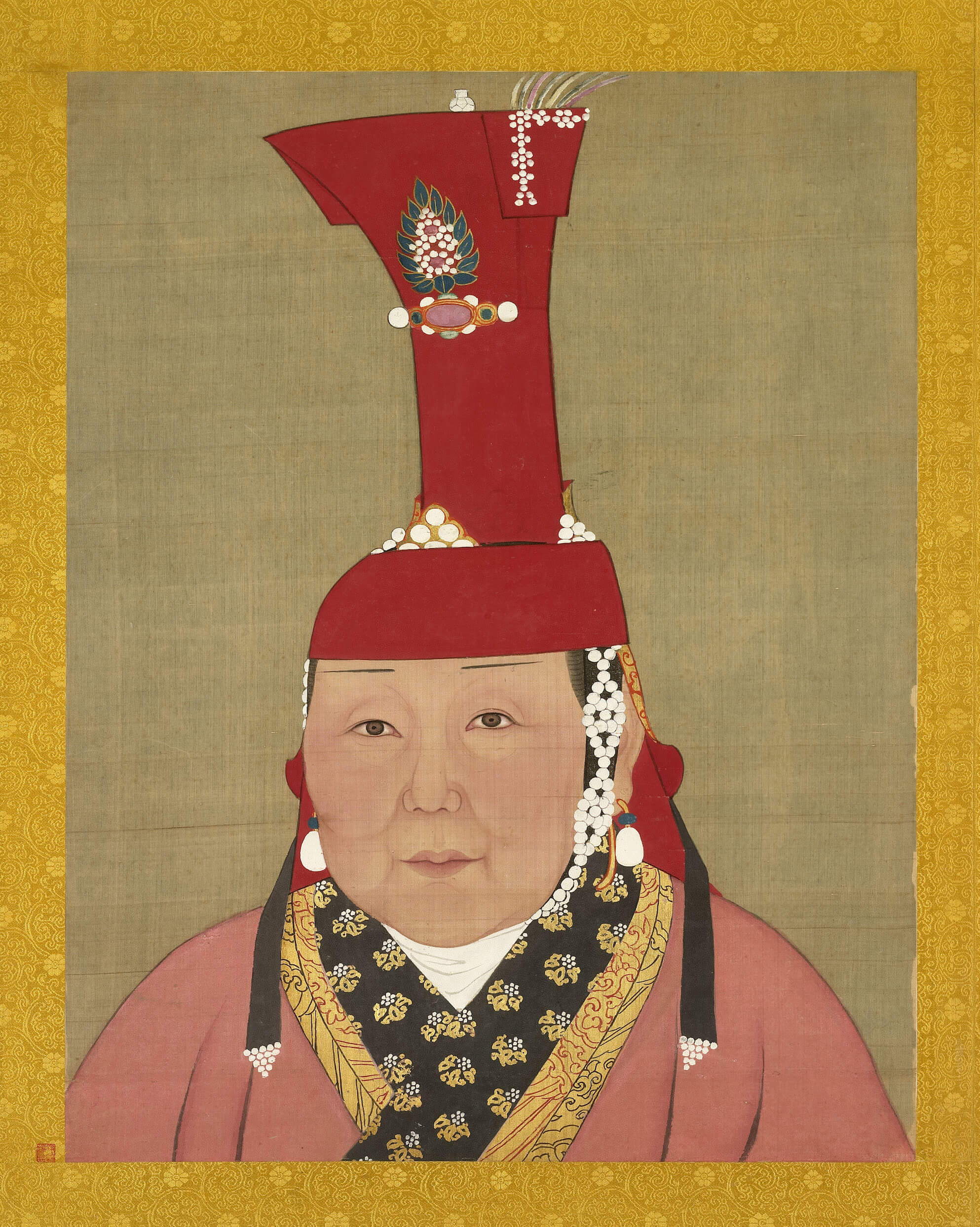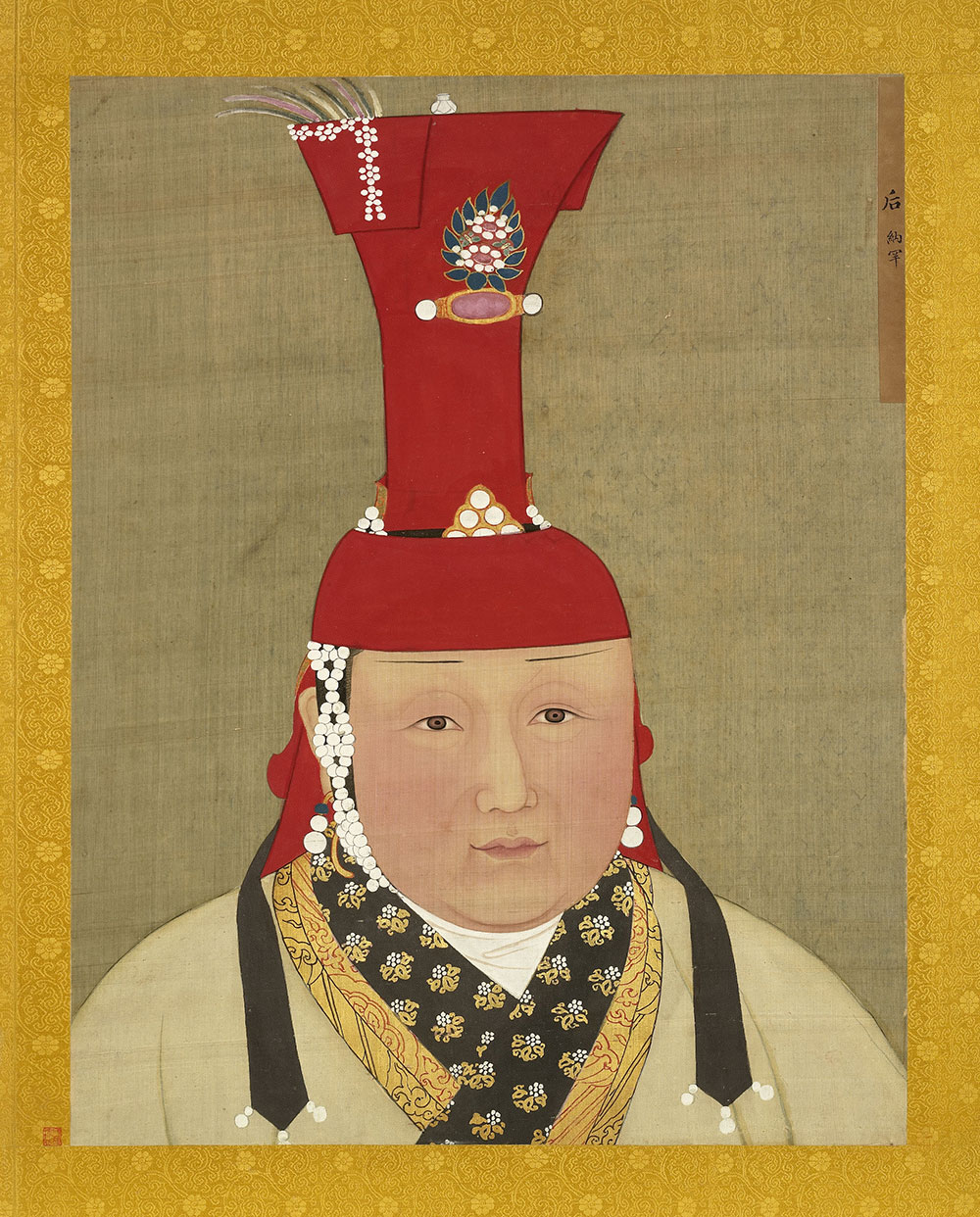In a Style of Their Own-Imperial Portraits of the Yuan Dynasty
Although formal Yuan dynasty imperial portrait paintings survive only in half-length bust format, they still clearly reveal the traditional clothing and headgear worn by the Mongol rulers. Representing a unique style in the history of Chinese imperial portraiture, they stand out are quite clearly.
- Emperor Shizu of the Yuan
- Verified and declared by the Ministry of Culture in June 2013 as a National Treasure
The Mongol leader Kublai Khan (1215-1294), who was also Emperor Shizu of the Yuan dynasty in Chinese history, is shown here with his head shaven below the warming cap. Behind his ears are also three looped braids, a typical hairstyle among the Mongols. He wears a white robe devoid of decoration and without any apparent defining features.
Despite the lack of patterning, this portrait employs various shades of color to render the three-dimensional features of the face, a technique that had traditionally been used by Nepali painters. This use of a non-Chinese painting method and the retention of clothing associated with nomadic life suggest the enormous authority that transcended borders and ethnic groups at the time.
- Portrait of Yingzong's Empress of the Yuan; Portrait of Yingzong's Empress of the Yuan
- Verified and declared by the Ministry of Culture in June 2013 as a National Treasure
The portrait for each ruler in "Album of Half-length Portraits of Yuan Dynasty Emperors" appears in a single folio. On the right side leaf is the painting in ink and colors on silk, and on the left is a brief biography written on paper. In the corresponding album for Yuan dynasty empresses, though, separate portrait paintings appear on both the left and right sides of each folio. The identity for each figure is indicated only by means of a paper title slip. The two portraits here, for example, feature identical slips for "Yingzong's Empress of the Yuan," meaning their identities are unknown.
Even though the actual appearance for some of these emperors and empresses cannot be verified by later generations, it is not as important as understanding that the key how they were portrayed and that their portraits were preserved for posterity precisely on account of their ultimate power and symbolic status.




